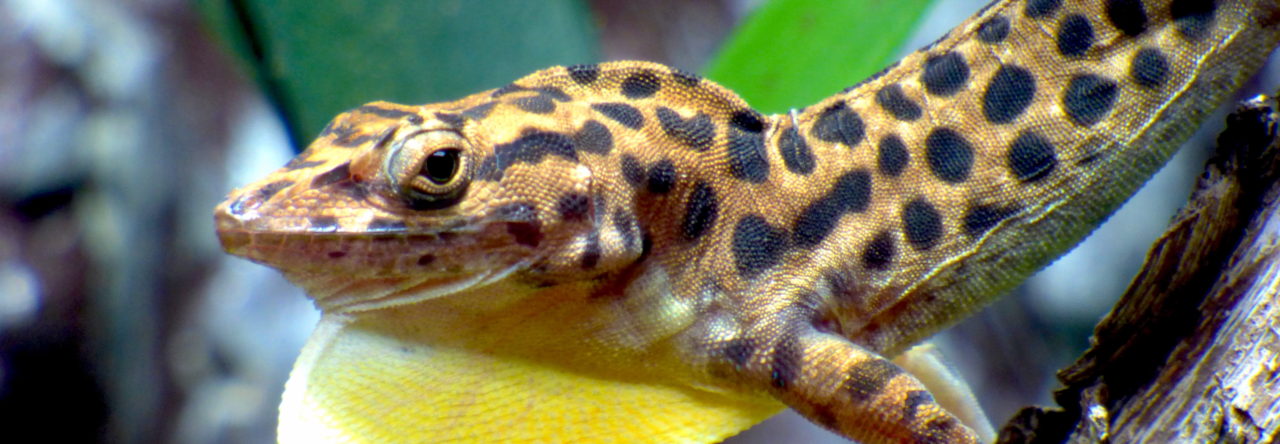Traditionally, ecologists have studied food web interactions within particular habitats with the idea that what happens in Vegas stays in Vegas. The idea is that habitats are discrete entities and most ecological interactions occur among species within that habitat, rather than across habitats. In recent years, however, that view has been challenged by the recognition that organisms and resources can cross habitat boundaries. For example, when bears catch migrating salmon, the fish carcasses wash ashore, and the nutrients released from their decay—as well as from the bears pooping in the woods—can link the productivity of the oceans to the terrestrial realm. Increasingly, such cross-habitat/ecosystem interactions are being seen as having major effects on food web functioning.
In a pair of recent papers, the UC-Davis anole team reports elegant field studies on the role that the brown anole, A. sagrei, plays in mediating these effects. In the first study, published last year, Spiller and colleagues added clumps of seaweed along the shoreline in the Bahamas, simulating the wrack that washes ashore after storms
in the fall. They found that the addition of this material led to an increase in herbivorous insect damage on plants living nearby. How does the presence of seaweed cause plants to get eaten more? Anolis sagrei is the answer. When the seaweed clumps appear, they attract large numbers of invertebrates, many of them marine amphipods. In turn, the lizards move from the vegetation to spend a substantial amount of time on the shore, among the seaweed, dining on the newfound riches (documentation of this involves a sophisticated isotopic analysis that takes advantage of differences in the proportion of C13 in the bodies of marine and terrestrial organisms, differences that get transmitted up the food chain and are detectable by analyzing the chemical composition of lizard tail tissue). As a result of focusing so much attention at the seafood restaurant, the lizards neglect their old haunts, up in the bushes. As a result, the insects there have a field day, and the vegetation pays the price.
In a follow-up study published last week in Science, the authors added another twist to the study, by investigating the effect of a second predator, ants, on herbivorous insects. Like the lizards, the ants have a negative effect on these insects, and thus a positive effect on the plants. Moreover, it turns out that the combination of ants and lizards is particularly potent—because the major predatory ant on tiny islands in the Bahamas is nocturnal, whereas anoles are diurnal, herbivorous insects are hit with a double-whammy, with no way to escape the predators. The result is the effect of ants + lizards combined in reducing plant damage is more than three times that of the effect of either predator alone. This synergism is interesting in its own right, but it gets even more fascinating. When seaweed is experimentally added to islands, the synergistic effect disappears. Like the lizards, the ants also start feeding in the seaweed, vegetation damage increases, and the combination of lizards + ants is hardly better for the plants (and hardly worse for the insects) than the effect of lizards alone.
These results show that ecosystems are complicated networks of interactions, many of which are non-linear, and often unpredictable beforehand. Detailed experimental and observational study—ideally combined, as in this project—are the best way to fully understand the intricacies of ecosystem functioning, and how that will change as the environment changes (note: seaweed accumulation may well increase with increased storms resulting from global warming, as well as from decreased abundance of oceanic predators and increased nutrients from runoff). And, most importantly, anoles seem to be an important fulcrum, at least in this system.
- Evolution in Real Time on Lizard Island - March 23, 2025
- Spider Snags Adult Anolis osa - March 22, 2025
- An Homage to the Green Anoles of New Orleans - March 21, 2025




3 Pingbacks